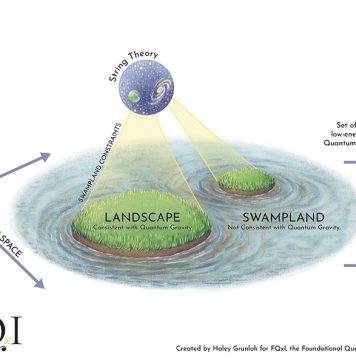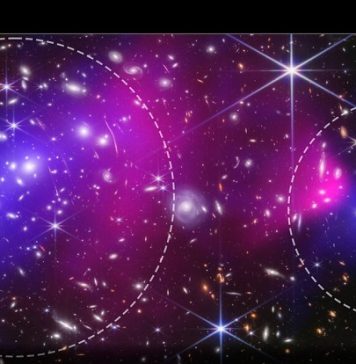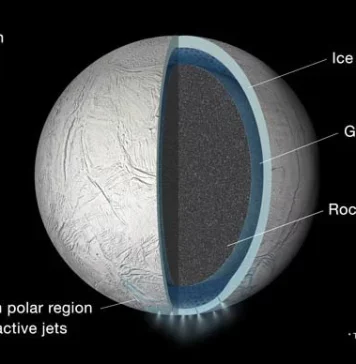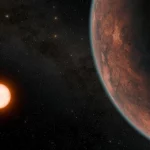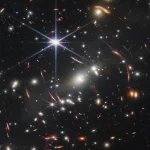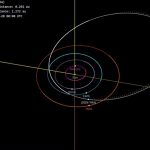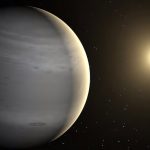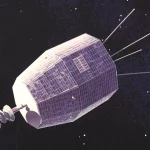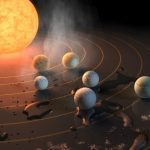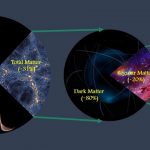Space & Future
GJ 12 b: Earth-sized exoplanet orbiting a quiet M dwarf star
What can Earth-sized exoplanets teach scientists about the formation and evolution of exoplanets throughout the cosmos?
This is what a recently submitted study hopes to...
A star is born: Stunning new image reveals baby stars in a nearby cosmic...
A new image taken with the powerful Dark Energy Camera (DECam) shows a breathtaking view of a dark, dusty region in space called the...
NASA reveals stunning new portrait and sounds of our neighbor galaxy, Andromeda
NASA has released a breathtaking new image of the Andromeda Galaxy, our closest galactic neighbor.
Also known as Messier 31, or M31, Andromeda is located...
Mysterious ‘mini halo’ reveals how the early universe was powered
Astronomers have made a stunning discovery deep in space: a vast cloud of high-energy particles—called a “mini halo”—surrounding one of the most distant galaxy...
How to make building blocks for a lunar habitat
By 2028, NASA intends to land the "first woman and first person of color" on the Moon as part of the Artemis III mission.
This...
If we can’t detect the first stars, maybe we can see their first galaxies
Population III (PopIII) stars represent astronomy's ultimate prize are the first generation of stars born from the pristine hydrogen and helium created in the...
After 20 years, NASA’s Mars orbiter learns a new trick to see deeper underground
Even after nearly two decades in space, NASA’s Mars Reconnaissance Orbiter (MRO) is proving it’s far from outdated.
Engineers have recently taught the spacecraft a...
How do scientists calculate the probability that an asteroid could hit Earth
I was preparing for my early morning class back in January 2025 when I received a notice regarding an asteroid called 2024 YR4.
It said...
Scientists discover giant new planet thanks to global stargazers
to the teamwork of scientists and everyday stargazers from around the world.
The planet, named TOI-4465 b, is a gas giant located about 400 light-years...
A fast radio burst detected last year turned out to be from long-dead NASA...
Fast Radio Bursts (FRBs) have remained a mystery to astronomers even since the first was detected in 2007 (known as the Lorimer Burst).
These quick...
Scientists create Mars building material that grows like a plant
The dream of living on Mars has been around for decades, often featured in science fiction books and movies.
But with successful Mars landings and...
The Milky Way is more clumpy than astronomers thought
Astronomers have found a new way of accurately mapping the outer gas disk of the Milky Way using the positions of young stars.
In the...
Deep Space
Stellar collision triggers supernova explosion, shows study
Astronomers have found dramatic evidence that a black hole or neutron star spiraled its way into the core of a companion star and caused...
Astronomers will probe exoplanets with Webb telescope
This month marks the third anniversary of the discovery of a remarkable system of seven planets known as TRAPPIST-1.
These rocky, Earth-size worlds orbit an...
Scientists find new way to harness energy from black holes
Physicists have found a new way to extract energy from black holes by breaking and rejoining magnetic field lines near the event horizon.
A remarkable...
Scientists precisely measure total amount of matter in the universe
A top goal in cosmology is to precisely measure the total amount of matter in the universe, a daunting exercise for even the most...
Moonlight does affect human sleep patterns, shows study
Stayed up past your bedtime? Check the lunar cycle.
Moonlight might be to blame.
A new study co-authored by Yale anthropologists Claudia Valeggia and Eduardo Fernández-Duque...

